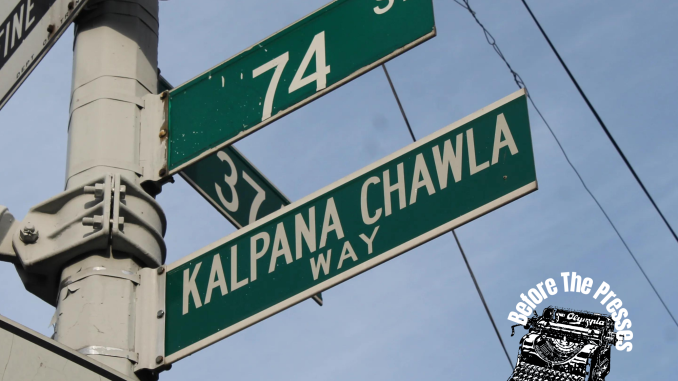
By Gabriela Flores
It’s a brutally hot July, and it’s time for an hour-long bike ride around Astoria. The year is 2009, and gentrification wasn’t even a thought in the developing mind of eight-year-old me. As I push the brakes and look around, I notice one truly perplexing aspect of Queens – our streets can be incredibly confusing.
Running from east to west, you have your avenues; north to south, your streets. If you’re lucky while strolling in Queens, you have some basic understanding that “drive,” “lane,” “place,” and “road” all signify different locations, even if the number that precedes it is the same. This fuss about street names may surely seem superficial and definitely unworthy of discussion – but that’s where I would challenge such an assumption. In recent years, gentrification has contributed to the loss of Queens’ locals. And for as much as I adore having both my avenues and streets being the same, there comes a time when you wonder why more streets don’t pay homage to the great community legends, influences, and staples that shaped the concrete land you’re walking on; or perhaps which country most residents on a certain block historically descend from. Street names, at least to me, have a certain longevity that can withhold time and even the ever-growing presence of gentrification.
Let’s consider some of the power-statement street names that illustrate this tangent. If you head to Rockaway and soak up the breeze, you may come across Jacob Riis Park Promenade, named after the famous journalist whose photographic documentation highlighted the living situations in impoverished NYC slums during the 1880s. A curious onlooker who comes across the eponymous pave and its sign while walking, may look up Riis and “How the Other Half Lives.” On a more fundamental level, the street name’s very existence pays respects to an important part of history, and one that shouldn’t be forgotten to avoid possibly repeating today.
If you set your GPS on course to Jackson Heights, you may spot a quirky sign on 35th Avenue with small numbers labeled along its bottom. And no, these numbers and oddly placed lines aren’t typos by fault of the city. Instead it’s a nod to Scrabble, a game founded in the basement of a local Queens church. Sure, there is nothing unique about “35th Avenue” itself, but there is something to be said about creative subtlety, especially here when it unravels such close-to-home histories behind common pastimes.
Being the world’s borough, it’s only fair for certain green aluminum signs across Queens to highlight the activism, community building, and struggles leaders took on for the sake of their respective hood, or pay homage to people who became role models for certain ethnic communities. The latter is what the enclave “Little India” did with a segment of 74th Street honoring Kalpana Chawla, the first woman of Indian descent to go to space.
So much of our city streets as New Yorkers shape who we are and our experiences, whether you’re from The Bronx, Manhattan, Brooklyn, Queens, or Staten Island. The only fitting move for active community members to do is to continue renaming certain streets. At the bare minimum, we should have more eponymous street titles in conjunction with the standard “34th Ave” and “34th Street.” Not only will it help those of us who have the attention span of an unshelled walnut, but it will also highlight who we are as Queens people, our values, and how we want to represent ourselves. This is especially important given that locals in our neighborhoods and many across our neighboring boroughs are experiencing the brunt of gentrification, struggling to pay rent and get by in a place where they formerly thrived. Even if our residential homes or local spots get bulldozed into dust and replaced with luxury complexes, we could at least have something that keeps those streets rooted in the community that built them. Infrastructure could be dropped and built again, but street signs carry a certain weight of importance – at least for the cyclist in me at eight years old, and still today.
